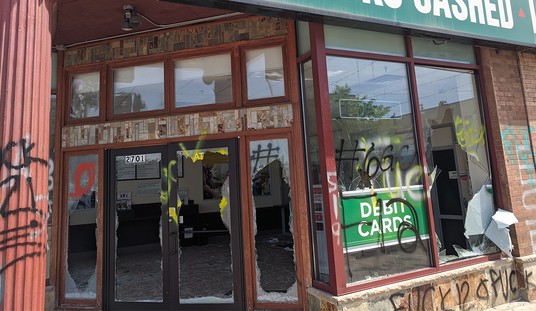WASHINGTON – Sen. Joe Manchin (D-W.Va.) once again tried to play middle-man for a contentious bill in the upper chamber, today touting the student-loan compromise that he and Sens. Tom Carper (D-Del.) and Angus King (I-Maine) forged with members of the Republican caucus.
But Manchin, King and Carper, essentially competing with Democratic leaders in a press conference today, are finding a lukewarm to hostile environment for the compromise within their own caucus.
“We have shown a willingness to compromise, but it’s time for Republicans to do the same. A compromise isn’t something that you just take whatever the other side offers you,” Senate Majority Leader Harry Reid (D-Nev.) said of “a number of my senators who are working with Republicans, trying to come up with something.”
Sens. Elizabeth Warren (D-Mass.) and Tom Harkin (D-Iowa) have reportedly been ripping Manchin over the deal as well.
Interest rates for subsidized federal student loans doubled July 1, following months of deadlock in Congress over finding a solution among the myriad competing proposals that have emerged from both parties.
The rise in the interest rate came because Congress failed to reach an agreement at the end of June for the student-loan program. The White House, House Republicans, and Senate Democrats have all pushed proposals to keep the rate from doubling. Senate Democrats want a cap in place to protect students if interest rates climb. President Obama and congressional Republicans have introduced slightly different proposals that tie loan rates to the 10-year Treasury yield.
The change in interest rates applies only to new subsidized loans issued after July 1 and would not affect students currently borrowing at the former rate of 3.4 percent.
In 2007, Congress passed the College Cost Reduction and Access Act to temporarily lower rates. The law dropped the interest rate for the need-based loans from 6.8 percent to 3.4 percent in a four-year period, ending in 2011. It eliminated the variable rates of Stafford loans, and instead, set unsubsidized loans at 6.8 percent, and subsidized loans at a lower, variable rate. Congress approved a one-year extension in 2012, which expired at the end of June.
Now that the extension has expired, both sides are denouncing each other for failing to reach a compromise in the latest episode of Washington discord.
“The divisions among the president and his own party,” House Speaker John Boehner declared last Monday, “are directly responsible for the current impasse that will now result in higher borrowing costs for students already coping with skyrocketing tuition bills.”
The House passed a bill sponsored by Republicans in May that would tie subsidized Stafford loan interest rates to the 10-year U.S. Treasury note, plus 2.5 percentage points, with a cap at 8.5 percent. Democratic senators proposed a plan stopping need-based student loan increases for two years to give Congress time to overhaul the federal student loan program. Obama’s plan falls somewhere between the House and Senate bills. The White House would set student lending rates each year based on Treasury’s borrowing costs, but those rates would be fixed for the life of the loan.
The compromise bill from Manchin, Carper, King, Lamar Alexander (R-Tenn.), Tom Coburn (R-Okla.) and Richard Burr (R-N.C.) ties all newly issued student loans to the U.S. Treasury 10-year borrowing rate plus 1.85 percent for subsidized and unsubsidized undergraduate Stafford loans; plus 3.4 percent for graduate Stafford loans; and plus 4.4 percent for PLUS loans with an 8.25 percent cap for consolidated loans.
Lawmakers called for action upon Congress’ return to Washington this week.
“I call on Congress to return immediately to Washington and pass legislation that will retroactively prevent this de facto tax increase on young people already struggling under mountains of debt. There is still time to undo this rate increase before borrowers feel its pinch. It is imperative that we act quickly, and show young people across this country that we are committed to easing the student loan debt crisis,” Sen. Richard Blumenthal (D-Conn.) said.
He encouraged students to make their voices heard through Twitter by using the #DontDoubleMyRate hashtag. Last year, students made the hashtag, which was created by the White House to put pressure on Congress, trend on Twitter nationally.
Alexander said the rate hike “is completely unnecessary and constitutes congressional malpractice by some Democratic senators who are stubbornly holding out for a short-term political fix that only helps a minority of students.”
Alexander said that the Senate should adopt instead a plan offered by a bipartisan group of six senators that “would save students billions of dollars in interest payments and cut rates nearly in half for all new undergraduate student loans.”
“Why should Congress adopt a short-term political fix that only helps 40 percent of students when there is an obvious permanent solution that will reduce interest rates for every one of the 18 million new loans that 11 million students will take out this year?” Alexander said.
He said the group of senators has united around a common idea similar to the one proposed by President Obama in his budget and passed by the House in May.
“If the United States is going to be competitive in the global economy, we must have the best educated workforce possible,” said Sen. Bernie Sanders (I-Vt.), who serves on the Senate education committee. “We must encourage young people of all income levels to expand their educational opportunities, not make it harder.”
“Short term, Congress must extend the subsidized Stafford student loan program at 3.4 percent. Long term, at a time when higher education in this country is far more expensive than in any other country, the Higher Education Act must be overhauled so that higher education is affordable for every young person who has the ability and desire to continue their education,” Sanders said.
On the other side of the Hill, lawmakers also lambasted members of the other party for not willing to compromise.
“I am deeply troubled that Republicans in Congress could not find the will to act before the student loan interest rates doubled. It is outrageous that Speaker Boehner and House Republicans chose to allow student loan rates to double, rather than work with Democrats on a bipartisan solution to protect our nation’s students,” Rep. Alcee Hastings (D-Fla.) said.
In a statement, Rep. George Miller (D-Calif.) criticized Rep. John Kline (R-Minn.), chairman of the education and workforce committee, for failing to take timely action on a solution.
Miller announced Tuesday he would be seeking signatures from members of the committee to move forward the Keep Student Loans Affordable Act of 2013 – a Senate proposal that would extend the current reduced interest rate for subsidized loans for one year.
“I urge my colleagues on both sides of the aisle to sign this petition so that we can immediately roll back the rate increase on 7.2 million students while Congress works to find a long-term solution to the student debt crisis,” Miller said.
Rep. Lynn Jenkins (R-Kan.) said Saturday “Democratic inaction” caused student loan interest rates to increase.
“Because of this inaction, millions of undergraduates who want to take out a subsidized Stafford loan are now being told they will have to pay an interest rate that’s double what they were expecting,” Jenkins said. “That’s just not right.”
“It’s time for Obama to step in and urge Senate Democrats to back House Republicans’ student rate proposal,” Jenkins said. “And President Obama should do his part by urging his fellow Democrats in the Senate to work with us. We will not let up until they agree to do the right thing.”
If lawmakers fail to reach an agreement, the average student borrower will have to pay back roughly $2600 more than under the previous rate, according to data provided by the U.S. Congress Joint Economic Committee.









Join the conversation as a VIP Member